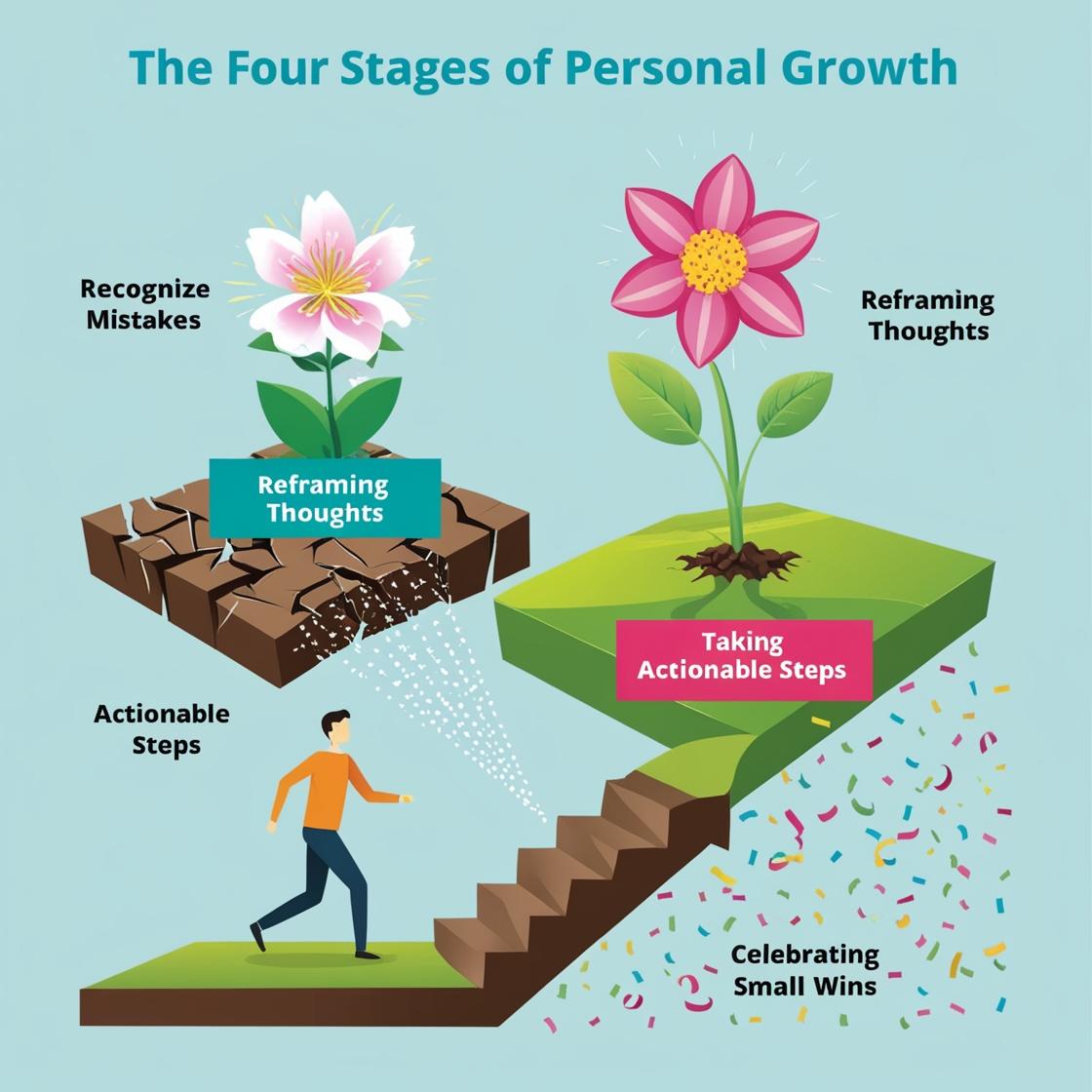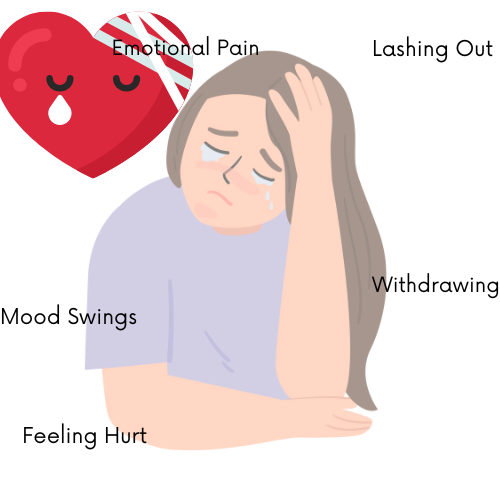9 Steps to Turn Mistakes into Growth: Overcoming Perfectionism and RSD
How ADHD Women Can View Mistakes as Feedback
For adhd women, mistakes can feel overwhelming and deeply personal. Heightened emotional responses, perfectionism, and the fear of rejection can make even minor setbacks seem like significant failures. But what if mistakes could be seen differently? What if they were viewed not as failures, but as valuable feedback?
Let’s explore how you can shift your mindset and turn mistakes into opportunities for growth.
Step 1: Reframe Emotional Reactions to Mistakes

Do you feel like every mistake confirms your fears about yourself? Pause for a moment. What if mistakes weren’t failures at all?
ADHD women often experience heightened emotional responses due to Rejection Sensitive Dysphoria (RSD). When mistakes feel like personal attacks, remind yourself:
- “This is not a failure; it’s feedback.”
- Ask: “What can I learn from this?”
Try this: The next time a mistake happens, take a deep breath, ground yourself, and mentally step back. Picture the mistake as a signpost—not a judgment of your worth, but a tool pointing the way forward.
Affirmation: “Mistakes don’t define me; they help me grow.”

Step 2: Use Mistakes to Break the Cycle of Perfectionism
Perfectionism can feel like a survival strategy to mask challenges or prove competence. But striving for perfection often keeps you stuck.
Instead, aim for progress over perfection. Each mistake proves that you’re trying—and trying is brave.
Shift Your Perspective:
- Instead of thinking, “I failed,” say, “I’m learning.”
- Reflect: “What would I tell a friend in this situation?” (Would you call them a failure? Of course not.)
Take small steps toward self-forgiveness and remind yourself: It’s okay to stumble as long as you keep moving forward.
Affirmation: “Progress matters more than perfection.”
Step 3: Build Self-Trust Through Feedback
Repeated mistakes can erode self-trust and create shame. You might think, “Why can’t I get this right, or I'm so stupid?” But trust isn’t built on never making mistakes but on how you respond to them.
Here’s How to Rebuild Self-Trust:
- See mistakes as constructive feedback, not proof of failure.
- Practice reframing: Instead of “I can’t do this,” say, “I’m figuring this out.”
- Celebrate small wins, even if the journey feels messy.
Think back: When was the last time a mistake helped you find a better way? What did it teach you?
Affirmation: “Every mistake brings me closer to the solution or accommodation.”

Step 4: Develop Self-Compassion
Harsh self-criticism can make mistakes feel unbearable. But criticism only adds to the emotional burden—it doesn’t help you learn.
Instead, practice self-compassion:
- Mistakes are a part of the human experience; it's how you learn, and everyone makes them.
- Ask yourself: “What would I say to someone I love who made this mistake?”
- Use kind, understanding language with yourself.
Try journaling about a recent mistake. Write about what happened, what you learned, and how you can grow. Avoid judgment—observe and reflect.
Affirmation: “I am worthy, even when I make mistakes.”
Step 5: Create a Mistake-Friendly Environment
Do you feel safe making mistakes? If not, it’s time to create an environment that fosters growth.
Here’s How:
- Surround yourself with people who understand that mistakes are part of learning.
- Reframe how you judge yourself and others when mistakes happen.
- Create a personal “growth space,” such as a journal or a trusted friend, to reflect on your learning.
Example: A woman with ADHD started a “win-and-learn” list. Every day, she noted one success and one lesson from a mistake. Over time, this practice helped her shift her mindset and reduce self-judgment.
Affirmation: “I grow best in spaces that celebrate effort, not perfection.”
Step 6: Externalize Mistakes as Part of the ADHD Experience
Mistakes often stem from the world not supporting your brain. It's built around the experience of the majority and invisible disabilities ( like yours are not supported) Instead of blaming yourself, externalize the situation.
What This Looks Like:
- Say: “This happened because my brain works differently than neurotypical people, and that’s okay.”
- Focus on problem-solving: “What strategy can help me next time?”
Externalizing reduces self-blame and allows you to approach mistakes more objectively.
Affirmation: “I am not my mistakes; they are part of my journey.”
Step 7: Build Emotional Regulation Skills
When mistakes feel overwhelming, emotional regulation can help you regain control. This is especially important for managing perfectionism with ADHD, as heightened emotions can magnify minor setbacks. Try This:- Practice deep breathing or grounding techniques when emotions spike.
- Learn name it to tame it
- Remind yourself: “Mistakes are data points, not judgments.”
- Reflect: “How can I adjust my approach next time?”
Affirmation: “I can stay calm and learn from every experience.”
Step 8: Use Mistakes as a Way to Help you Learn how to Advocate or Create Accommodations
If certain types of mistakes keep happening, they might point to areas where you need support or accommodations. ADHD coping strategies for perfectionism can include asking for flexibility or exploring tools that suit your unique brain. Example:- Struggling with deadlines? Try using ADHD-friendly time management tools, like visual timers or project trackers, to reduce overwhelm.
- Overwhelmed by household clutter? Consider decluttering strategies tailored for ADHD, such as the "10-minute tidy" method.
Affirmation: “I deserve the support I need to thrive.”
Step 9: Focus on Progress, Not Perfection to break Procrastination

- Celebrate every small win—each step forward is an achievement.
Affirmation: “I am making progress, one step at a time. Progress not perfection."
Conclusion
For ADHD women mistakes can be reframed as feedback instead of failure. By addressing rejection sensitivity, perfectionism, and the fear of failure, you can build a more compassionate relationship with yourself and your ADHD brain.What’s one mistake you can reframe as feedback today? Share your story in the comments below or start a “win-and-learn” journal to track your growth.Remember: Mistakes are part of the learning process. They help you grow stronger, more resilient, and more equipped to thrive with ADHD.




